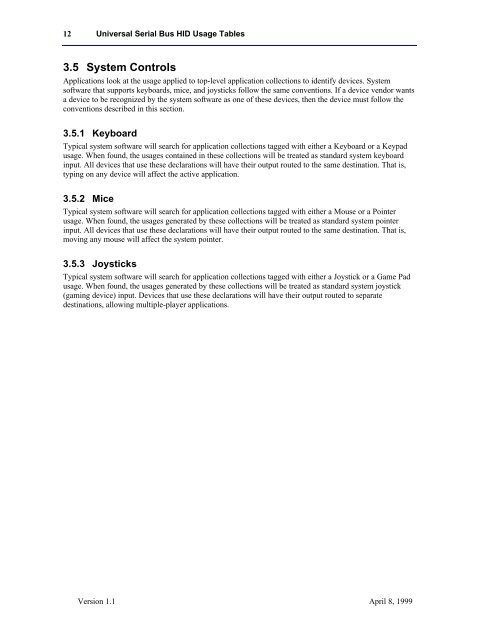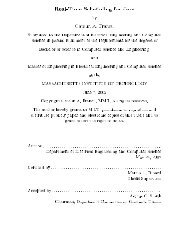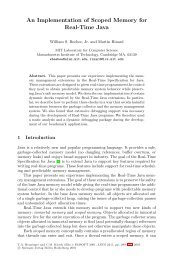HID Usage Tables Document 1.1 - C. Scott Ananian
HID Usage Tables Document 1.1 - C. Scott Ananian
HID Usage Tables Document 1.1 - C. Scott Ananian
- No tags were found...
Create successful ePaper yourself
Turn your PDF publications into a flip-book with our unique Google optimized e-Paper software.
12 Universal Serial Bus <strong>HID</strong> <strong>Usage</strong> <strong>Tables</strong>3.5 System ControlsApplications look at the usage applied to top-level application collections to identify devices. Systemsoftware that supports keyboards, mice, and joysticks follow the same conventions. If a device vendor wantsa device to be recognized by the system software as one of these devices, then the device must follow theconventions described in this section.3.5.1 KeyboardTypical system software will search for application collections tagged with either a Keyboard or a Keypadusage. When found, the usages contained in these collections will be treated as standard system keyboardinput. All devices that use these declarations will have their output routed to the same destination. That is,typing on any device will affect the active application.3.5.2 MiceTypical system software will search for application collections tagged with either a Mouse or a Pointerusage. When found, the usages generated by these collections will be treated as standard system pointerinput. All devices that use these declarations will have their output routed to the same destination. That is,moving any mouse will affect the system pointer.3.5.3 JoysticksTypical system software will search for application collections tagged with either a Joystick or a Game Padusage. When found, the usages generated by these collections will be treated as standard system joystick(gaming device) input. Devices that use these declarations will have their output routed to separatedestinations, allowing multiple-player applications.Version <strong>1.1</strong> April 8, 1999





